Humble Chronicles: Shape of the Component
Last time I ran a huge experiment trying to figure out how components should work in Humble UI. Since then, I’ve been trying to bring it to the main.
This was trickier than I anticipated — even with a working prototype, there are still lots of decisions to make, and each one takes time.
I discussed some ideas in Humble Chronicles: Managing State with VDOM, but this is what we ultimately arrived at.
The simplest component:
(ui/defcomp my-comp []
[ui/label "Hello, world!"])Note the use of square brackets [], it’s important. We are not creating nodes directly, we return a “description” of UI that will later be analyzed and instantiated for us by Humble UI.
Later if you want to use your component, you do the same:
(ui/defcomp other-comp []
[my-comp])You can pass arguments to it:
(ui/defcomp my-comp [text text2 text3]
[ui/label (str text ", " text2 ", " text3)])To use local state, return a function. In that case, the body itself will become the “setup” phase, and the returned function will become the “render” phase. Setup is called once, render is called many times:
(ui/defcomp my-comp [text]
;; setup
(let [*cnt (signal/signal 0)]
(fn [text]
;; render
[ui/label (str text ": " @*cnt)])))As you can see, we have our own signals implementation. They seem to fit very well with the rest of the VDOM paradigm.
Finally, the fullest form is a map with the :render key:
(ui/defcomp my-comp [text]
(let [timer (timer/schedule #(println 123) 1000)]
{:after-unmount
(fn []
(timer/cancel timer))
:render
(fn [text]
[ui/label text])}))Again, the body of the component itself becomes “setup”, and :render becomes “render”. As you can see, the map form is useful for specifying lifecycle callbacks.
Code reuse
React has a notion of “hooks”: small reusable bits of code that have access to all the same state and lifecycle machinery that components have.
For example, a timer always needs to be cancelled in unmount, but I don’t want to write after-unmount every time I want to use a timer. I want to use a timer and have its lifecycle to be registered automatically.
Our alternative is with macro:
(defn use-timer []
(let [*state (signal/signal 0)
timer (timer/schedule #(println @*state) 1000)
cancel (fn []
(timer/cancel timer))]
{:value *state
:after-unmount cancel}))
(ui/defcomp ui []
(ui/with [*timer (use-timer)]
(fn []
[ui/label "Timer: " @*timer])))Under the hood, with just takes a return map of its body and adds stuff it needs to it. Simple, no magic, no special “hooks rules”.
Same as with hooks, with can be used inside with recursively. It just works.
Thanks Kevin Lynagh for the idea.
Shared state
One of the goals of Humble UI was to make component reuse trivial. Web, for example, has hundreds of properties to customize a button, and still, it’s often not enough.
I lack the resources to make hundreds of properties, so I wanted to take another route: make components out of simple reusable parts, and let end users recombine them.
So a button becomes clickable (behavior) and button-look (visual). Want a custom button? Implement your own look, and use the same behavior. Want to reuse the look in another component (e.g. a toggle button?). Write your own behavior, and reuse the visuals.
The look itself consists of simple parts that can be reused and recombined:
(ui/defcomp button-look [child]
[clip-rrect {:radii [4]}
[rect {:paint button-bg)}
[padding {:padding 10}
[center
[label child]]]]])And then the button becomes:
(ui/defcomp button [opts child]
[ui/clickable opts
[ui/button-look child]])(this and a previous one are simplified for clarity)
Now, the problem. The button is, of course, interactive. It reacts to being hovered, pressed, etc. But the state that represents it lives in clickable (the behavior). How to share?
The first idea was to use signals. Like this:
(ui/defcomp button [opts child]
(let [*state (signal/signal nil)]
(fn [opts child]
[ui/clickable {:*state *state}
[ui/button-look @*state child]])))Which does work, of course, but a little too verbose. It also forces you to define state outside, while logically clickable should be responsible for it.
So the current solution is this:
(ui/defcomp button [opts child]
[ui/clickable opts
(fn [state]
[ui/button-look state child])])Which is a bit tighter and doesn’t expose the state unnecessarily. The look component is also straightforward: it accepts the state as an argument, without any magic, so it can be reused anywhere.
Where to try
Current development happens in the “vdom” branch. Components migrate slowly, but steadily, to the new model.
Current screenshot for history:

Soon we will all live in a Virtual DOM world, I hope.
